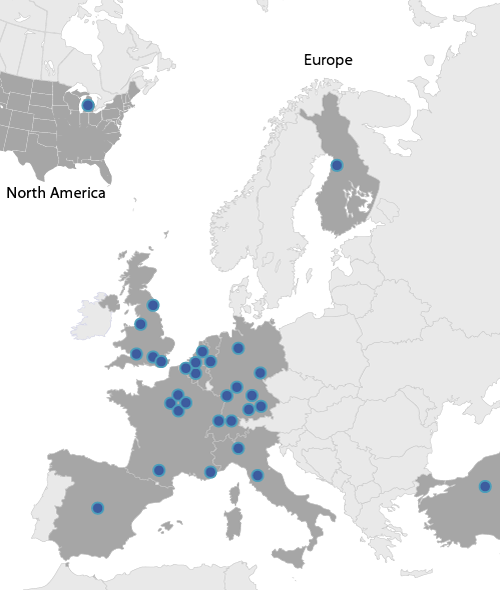Agencia Estatal Consejo Superior de Investigaciones Científicas
Agencia Estatal Consejo Superior de Investigaciones Científicas
C/ Serrano 117
28006 Madrid
Spain
Project Leader
Prof. Santiago Rodriguez de Cordoba
Phone: +34 91 837 3112 ext. 4432
Fax: + 34 91 536 0432![]() Contact
Contact
Project Staff
Dr. Agustin Tortajada
Postdoctoral Researcher ![]() Contact
Contact
Dr. Jaouad Anter
Postdoctoral Researcher![]() Contact
Contact
Marta Subias
Predoctoral Researcher![]() Contact
Contact
Sheila Pinto
Laboratory Technician![]() Contact
Contact
Lucia Juana Lopez
Laboratory Technician![]() Contact
Contact
Jesus Garcia
Bioinformatic![]() Contact
Contact
Angela Ruiz
Administrative assistant![]() Contact
Contact

- Prof. de Cordoba's team at CSIC.
Institute Presentation
The Agencia Estatal Consejo Superior de Investigaciones Científicas (CSIC) is the largest public research organisation in Spain. CSIC collaborates with national and International universities, public RTD organisations, SMEs, companies and other institutions of a scientific/technological nature. It has a staff of more than 13,500 employees, among these about 3,500 are permanent researchers and more than 4,000 are pre- and post-doctoral researchers. The CSIC has 135 institutes or centres distributed throughout Spain, including 51 Joint Research Units with universities or other research institutions. There is also a delegation in Brussels.
The Centro de Investigaciones Biologicas (CIB) is the largest multidisplinary institute within CSIC with excellent infrastructures for research work related to Biomedicine, Genetics and Structural Biology (http://www.cib.csic.es). These include a first-class animal and proteomics facilities and an excellent DNA sequencing facility that operates as a SME and provides state of the art NGS and molecular diagnostics services.

- Centro de Investigaciones Biologicas (CIB)
The Complement Genetics and Molecular Pathology Group at the Centro de Investigaciones Biológicas (CSIC) in Madrid comprises 8 people and develops a multidisciplinary approach to the study of the molecular bases of human disease. Our general objective is the study of heritable variation and disease; how variations in single genes interact with each other and their environment to influence the development of pathologic situations. After previous successes in mapping and identifying various disease-causing genes (including those responsible for Alkaptonuria, 3-Methylcrotonylglycinuria, Anophtalmia and Progressive Myoclonus Epilepsy of the Lafora type) our research interest moved to understand pathogenic mechanisms and to develop translational approaches to diagnose and treat disease. Our research activities involve gene identification and mutation detection; biochemical and cellular analysis of the products of specific disease-associated genes; structure/function analysis of mutant proteins; and the development of in vitro and in vivo disease models. Currently, these research activities focus on disorders due to dysregulation of the Complement system, like atypical hemolytic uremic syndrome, dense deposit disease and age-related macular degeneration, and in a fatal form of progressive myoclonus epilepsy called Lafora disease.
Overall, we have a strong -long standing- interest in Complement function and genetics. Since 1983, my laboratory has been involved in the study of the genetics and function of the proteins that regulate the complement system. We described in 1986 the human "Regulators of Complement Activation" (RCA) gene cluster in chromosome 1q32. This contribution was followed by a series of papers that provided most of our current understanding of the genomic organization of this region of the human genome. In the last 12 years we have made crucial contributions that have provided fundamental inshights into the pathogenic mechanisms of disorders like atypical hemolytic uremic syndrome (aHUS), dense deposit disease (DDD) and age-related macular degeneration (AMD). We have developed animal models for some of these disorders and have explored structural aspects of the complement components and the functional consequences of their genetic variations. In a series of recent publications we contributed to solve the basic mechanisms implicated in the assembly and activation of the AP C3 convertase and provided an explanation for the association of genetic polymorphisms and mutations in several complement components with disease. These data are instrumental in understanding the pathogenic mechanisms underlying the association of complement mutations and polymorphism with disease and are aiding in the molecular design of therapeutic agents (www.cib.csic.es/en/grupo.php?idgrupo=21).








